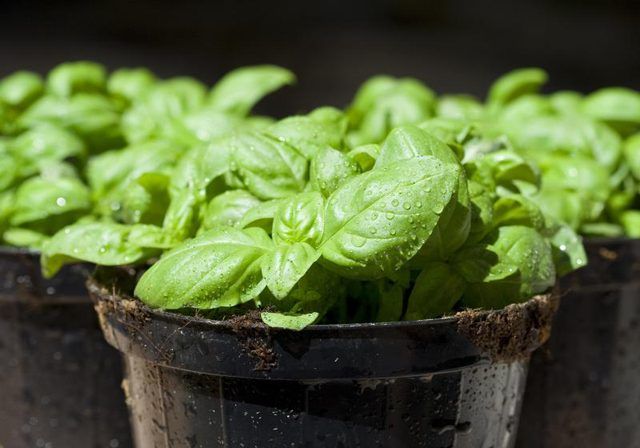Bulbs
Flower Basics
Flower Beds & Specialty Gardens
Flower Garden
Garden Furniture
Garden Gnomes
Garden Seeds
Garden Sheds
Garden Statues
Garden Tools & Supplies
Gardening Basics
Green & Organic
Groundcovers & Vines
Growing Annuals
Growing Basil
Growing Beans
Growing Berries
Growing Blueberries
Growing Cactus
Growing Corn
Growing Cotton
Growing Edibles
Growing Flowers
Growing Garlic
Growing Grapes
Growing Grass
Growing Herbs
Growing Jasmine
Growing Mint
Growing Mushrooms
Orchids
Growing Peanuts
Growing Perennials
Growing Plants
Growing Rosemary
Growing Roses
Growing Strawberries
Growing Sunflowers
Growing Thyme
Growing Tomatoes
Growing Tulips
Growing Vegetables
Herb Basics
Herb Garden
Indoor Growing
Landscaping Basics
Landscaping Patios
Landscaping Plants
Landscaping Shrubs
Landscaping Trees
Landscaping Walks & Pathways
Lawn Basics
Lawn Maintenance
Lawn Mowers
Lawn Ornaments
Lawn Planting
Lawn Tools
Outdoor Growing
Overall Landscape Planning
Pests, Weeds & Problems
Plant Basics
Rock Garden
Rose Garden
Shrubs
Soil
Specialty Gardens
Trees
Vegetable Garden
Yard Maintenance
How to Freeze Basil Leaves
How to Freeze Basil Leaves. An annual plant, basil (Ocimum basilicum) can be grown indoors in a container or outdoors as part of a vegetable or herb garden. The wrinkled, delicate green leaves can be used fresh in soups, pastas, sauces and salads. Basil leaves can be harvested and then frozen for future use. This is useful as basil plants are not...

An annual plant, basil (Ocimum basilicum) can be grown indoors in a container or outdoors as part of a vegetable or herb garden. The wrinkled, delicate green leaves can be used fresh in soups, pastas, sauces and salads. Basil leaves can be harvested and then frozen for future use. This is useful as basil plants are not frost-tolerant, so if you cannot move them indoors before cold weather, freezing basil leaves is a way of prolonging your harvest into colder months. If kept in an air-tight container, frozen basil, in whole leaves or in a puree, can keep for several months, but storage time depends greatly on freezer temperature and how much air is present in the container.
Harvesting the Basil
Harvesting basil, whether in your garden or from a windowsill plant, is simple. For small amounts, pick off a few leaves from each plant around midsummer rather than cutting off a whole stem. To encourage your plant to become bushier, occasionally cut off branch tips. For larger quantities, cut whole stems from the top down -- but no more than third of the plant's overall height. Cut right above a pair of leaves so you do not leave a stub. Your basil plant will grow back. If it is the final harvest of the season, cut all the stems from the base, and pick off the leaves individually.
Preparing the Basil
Basil, whether it is to be stored whole or chopped, needs to be washed and dried prior to freezing. This prolongs storage life. Remove individual leaves, cutting them where they attach to the stem. Discard the stem or place it in your compost pile. Rinse your leaves with cool water to remove all debris. Air-dry your leaves for roughly 30 minutes by spreading them on a clean cloth on the counter. You can also place large quantities of leaves in a salad spinner before spreading them out, to reduce drying time.
Freezing Whole Leaves
To freeze whole basil leaves, blanche your basil leaves in boiling water for two seconds. Immediately move the blanched leaves to an ice bath to stop cooking. Dry your basil leaves again. To keep leaves loose, separate layers of whole basil leaves with wax paper. Place in a freezer-safe plastic bag. To minimize the chances of freezer burn, push out as much air as possible from the bag before sealing.
Freezing a Puree
You can also freeze fresh basil in a puree. This method means you have prechopped basil readily available. Take the dried and washed basil leaves and put them in a food processor. Add a small amount of olive oil or water, roughly 1 tablespoon of liquid per 1-cup of basil leaves, loosely packed. Puree the leaves until a coarse slush has formed. Pour the puree into an ice cube tray and freeze. Remove the cubes from the tray, and store them in a resealable freezer bag. You can also cover the trays with plastic wrap and pop out a cube as needed.